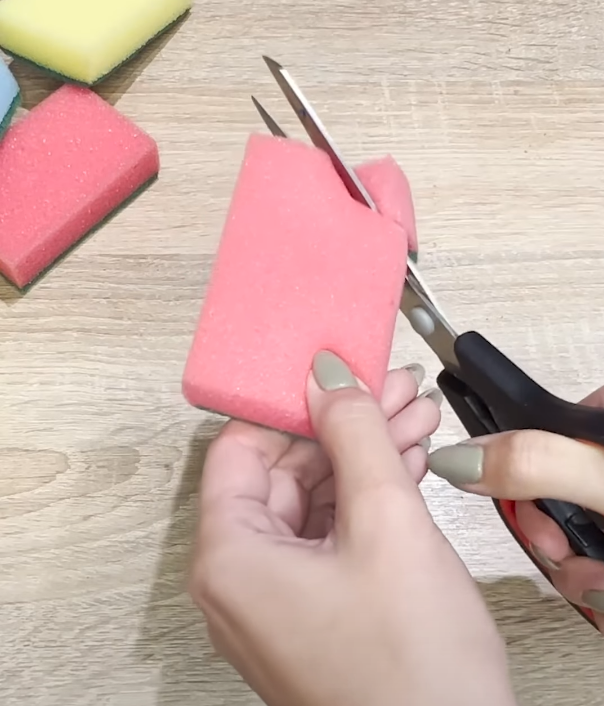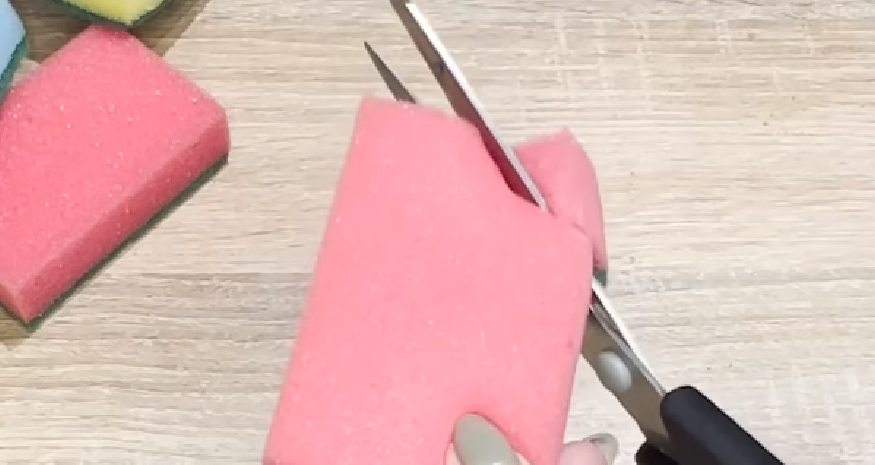This dish sponge trick is as easy as pie, yet incredibly useful. Let’s explore it.
Others are reading now
Many of us use dish sponges far longer than recommended. In fact, microbiologists advise replacing your sponge every week.
It’s crucial to change dish sponges regularly as they accumulate bacteria and microbes from food residues and grime. Over time, even with rinsing, the sponge becomes a breeding ground for germs that can contaminate your surfaces and dishes.
If you’re hoping that boiling it or frequently microwaving it will keep it sufficiently clean, think again. A study has shown that while this may initially reduce bacteria by about 60%, it won’t sterilize the sponge. Even sponges that were regularly cleaned this way were found to be as bacteria-laden as those that weren’t cleaned.
Also read

Why you should cut the corner
If you can’t change your sponge every week, at least do it once a month if you’re washing dishes daily. And in this case, there’s no need to necessarily throw away your old kitchen sponge. Why not try a smart repurposing trick?
When the sponge reaches the point where it’s obviously too worn out for cleaning countertops and dishes, cut off a corner. This clipped corner serves to identify this sponge as being designated for something other than dishwashing. It goes without saying that you should cut the corner wide enough to notice it’s been cut.
Keep this sponge away from your new, clean sponges and use it for scrubbing dirty things, like your trash can, toilet, shoes, or even your car tires. Eventually, it will truly be ready to be thrown away. Until then, you can rest easy knowing you’ve used it as much as possible. And you’ll be sure not to use a dirty sponge for cleaning your dishes!
Dish sponges are typically made from synthetic materials like polyurethane, a petroleum derivative. They may contain antimicrobial agents to reduce bacterial growth. These sponges are not biodegradable and can release microplastics as they break down. Moreover, their production has a carbon footprint. All the more reason to use them as long as possible!


